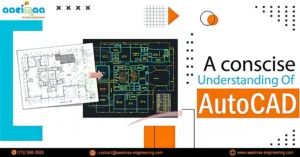BIM services are significantly improved by AI (Artificial Intelligence). The physical and functional qualities of a building are represented digitally through BIM. Throughout the lifecycle of a building, it enables collaboration, data visualization, and analysis among architects, engineers, and construction specialists.
Here are some significant ways that AI influences the significance of BIM services:
- Efficiency and automation: AI makes it possible to automate time-consuming and repetitive BIM operations. It has the ability to automatically create 3D models, extract data from 2D designs, and carry out clash detection to find inconsistencies between various construction aspects. This automation increases effectiveness, eliminates errors, and saves time.
- Design Improvement: Massive volumes of data can be analyzed by AI systems to improve building designs. AI can produce optimized design options by taking into account elements like material utilization, structural soundness, and energy efficiency. This aids in the decision-making process and results in more cost- and sustainably-effective building designs from architects and engineers.
- Forecasting Analytics: AI can examine previous data from completed construction projects and offer prognostications for upcoming initiatives. To aid in decision-making, it can spot patterns, dangers, and performance trends. Better project results can be achieved through the use of predictive analytics to enhance project planning, scheduling, and resource allocation.
- Augmented and virtual reality: The display of BIM models is improved by virtual and augmented reality (VR/AR) technologies powered by AI. They enable stakeholders to view designs in actual environments, conduct virtual tours of structures, and make defensible choices regarding space utilization, aesthetics, and utility. Project team collaboration and communication are enhanced as a result.
- Maintenance and Facility Management: BIM systems with AI capabilities might be utilized for facility management and upkeep after construction. AI can monitor building performance, identify anomalies, and suggest maintenance activities by combining BIM data with sensors, IoT (Internet of Things) gadgets, and predictive analytics. This proactive strategy raises occupant comfort, decreases downtime, and increases operational efficiency.
- Improved Cooperation: Project stakeholders can collaborate more effectively thanks to AI. AI improves collaboration between architects, engineers, contractors, and owners by improving communication, automating data transmission, and giving real-time updates. It encourages collaboration, reduces mistakes, and makes sure that everyone has easy access to project information.
In general, AI improves BIM services through work automation, design optimization, predicting insights, enabling immersive visualization, aiding facility management, and fostering collaboration. Throughout the building lifespan, it enhances efficiency, accuracy, and decision-making, leading to better-designed, more environmentally friendly, and more affordable buildings.




